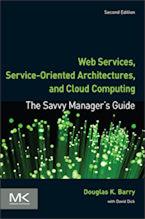Universal Data Element Framework (UDEF)
Universal Data Element Framework (UDEF): The Universal Data Element Framework (UDEF) is a cross-industry metadata identification strategy designed to facilitate convergence and interoperability among e-business and other standards. The objective of the UDEF is to provide a means of real-time identification for semantic equivalency, as an attribute to data elements within e-business document and integration formats. The supporters of the UDEF hope that it can be seen as the "Dewey Decimal System" across standards. The UDEF can be seen as only an attribute in the data element. There are no process, validation, or handling requirements. The intent is to communicate in a standard and repeatable way, the exact concept that the data element represents. There is very little about context, just enough to identify the data element exactly. Organization: www.udef.com. More information: UDEF page on Wikipedia.
Context for Universal Data Element Framework (UDEF)
Related Articles for Universal Data Element Framework (UDEF)
- Address XML
- Computing Environment XML
- Content Syndication XML
- Customer Information XML
- Electronic Data Interchange (EDI) XML
- Geospatial XML
- Human XML
- Localization XML
- Math XML
- Open Applications Group Integration Specification (OAGIS)
- Open Office XML
- Topic Maps XML
- Trade XML
- Translation XML
- Universal Business Language (UBL)
Author
Douglas K Barry
Principal
You may use this material for your work or classes. Reprint Policy. Be sure to check the menu at the left for other articles available on this site.
The Savvy Manager's Guide
Douglas K Barry is also the author of a book that explains Web Services, service-oriented architecture, and Cloud Computing in an easy-to-understand, non-technical manner.
Web Services, Service-Oriented Architectures, and Cloud Computing: The Savvy Manager's Guide (Second Edition)
by Douglas K Barry with David Dick
This is a guide for the savvy manager who wants to capitalize on the wave of change that is occurring with Web Services, service-oriented architecture, and—more recently—Cloud Computing. The changes wrought by these technologies will require both a basic grasp of the technologies and an effective way to deal with how these changes will affect the people who build and use the systems in our organizations. This book covers both issues. Managers at all levels of all organizations must be aware of both the changes that we are now seeing and ways to deal with issues created by those changes.

